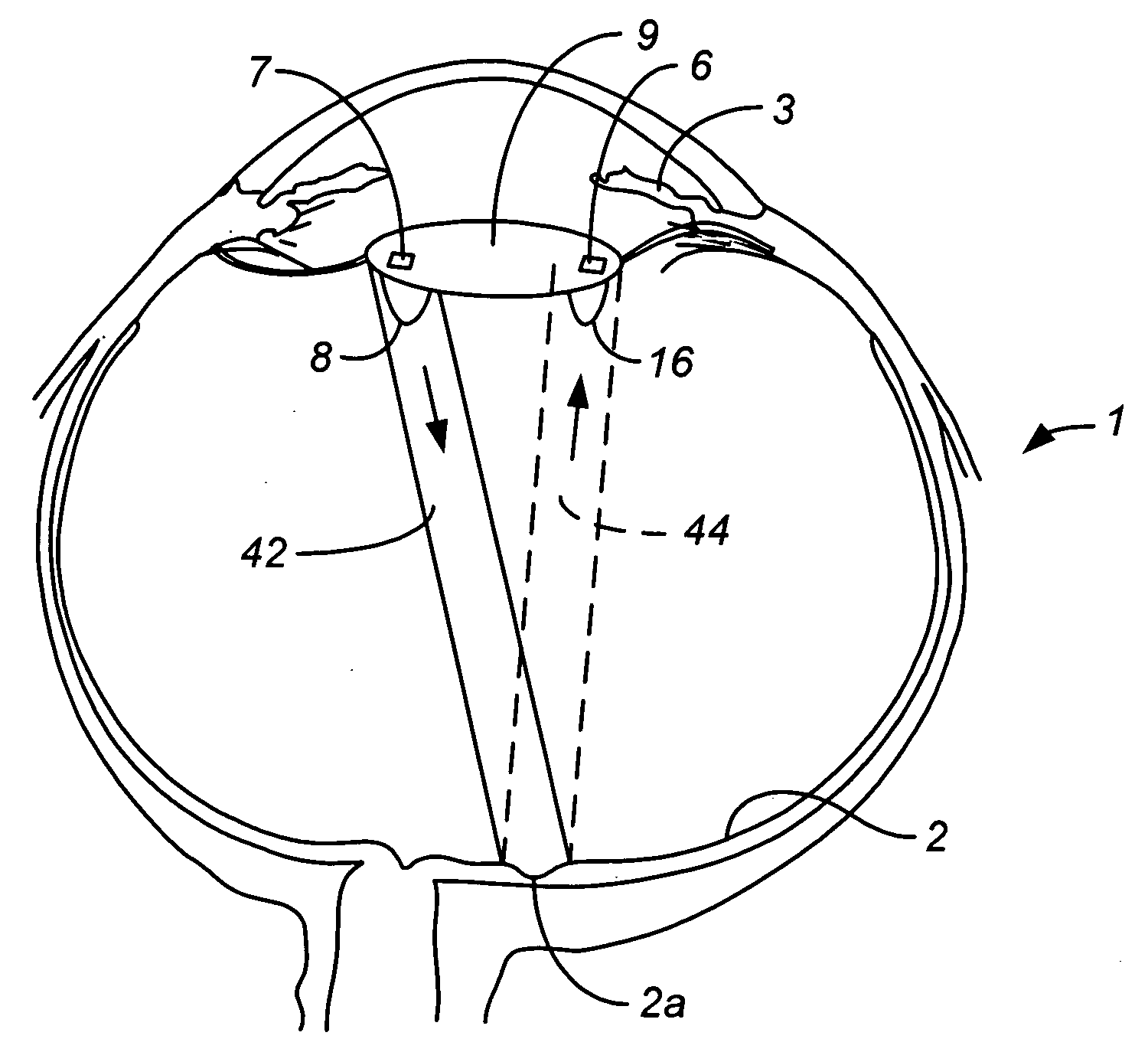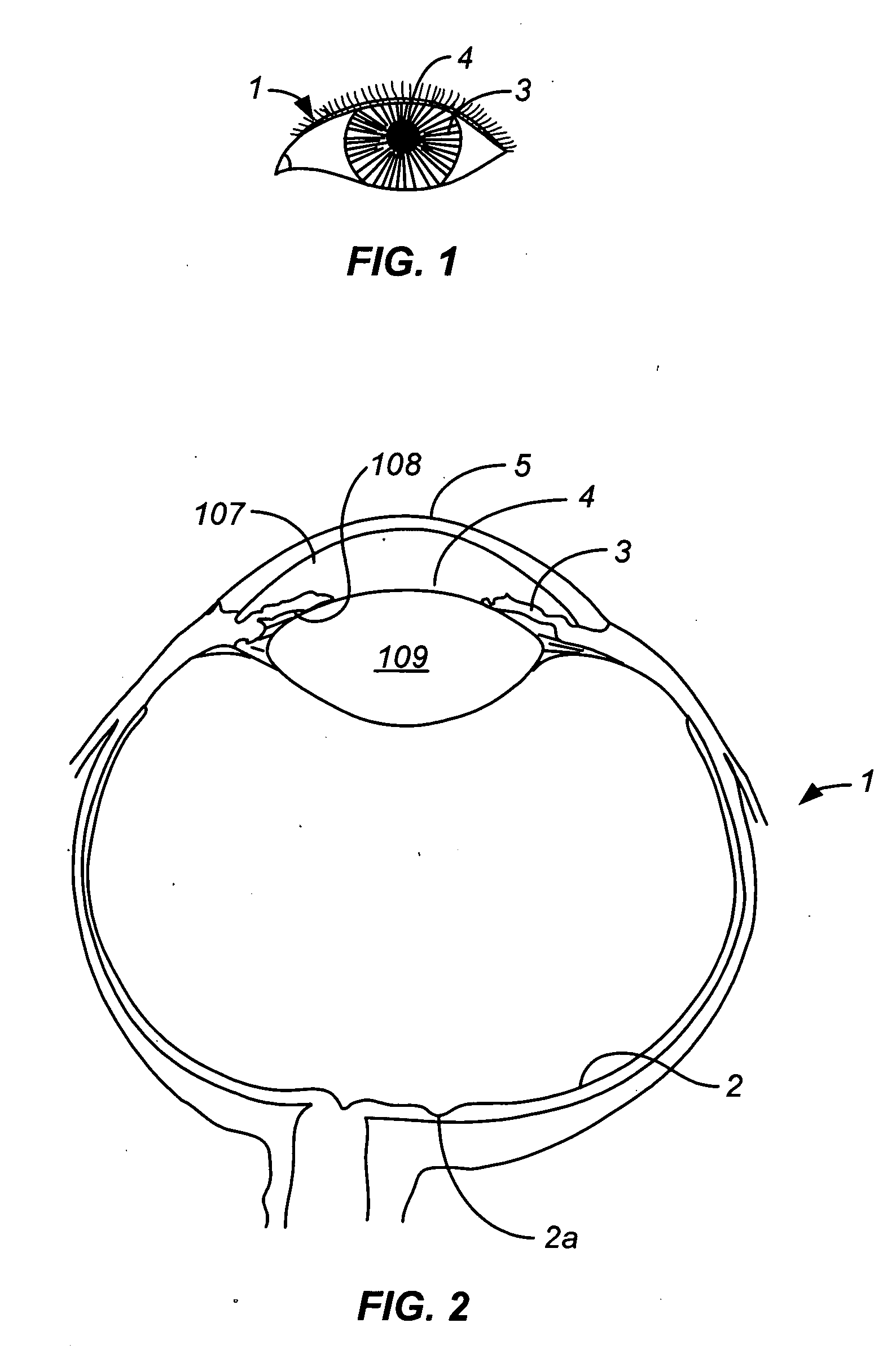Intraocular lens measurement of blood glucose
a technology of blood glucose and intraocular lens, which is applied in the field of measuring blood analytes, can solve the problems of high cost of glucose testing supplies, the need to draw blood for analysis, and many patients not testing their blood as frequently as recommended
- Summary
- Abstract
- Description
- Claims
- Application Information
AI Technical Summary
Benefits of technology
Problems solved by technology
Method used
Image
Examples
Embodiment Construction
[0048] Rhodopsin is the visual pigment contained in the rods that allows for dim vision. Cone visual pigments (sometimes termed “opsins”) are contained in the cones of the retina and allow for central and color vision. The outer segments of the rods and cones contain large amounts of visual pigment, stacked in layers lying perpendicular to the light incoming through the pupil. As visual pigment absorbs light, it breaks down (bleaches) into intermediate colorless molecular forms and initiates a signal that proceeds down a tract of nerve tissue to the brain, allowing for the sensation of sight. This phenomenon is termed bleaching, since the retinal tissue loses its color content when a light is directed onto it.
[0049] The colorless compounds formed during the bleaching process (which is a consequence of vision and therefore a continuous process whenever light enters the eye) are converted back to the original, colored compounds in a sequence of chemical reactions called “regeneration...
PUM
 Login to View More
Login to View More Abstract
Description
Claims
Application Information
 Login to View More
Login to View More - R&D
- Intellectual Property
- Life Sciences
- Materials
- Tech Scout
- Unparalleled Data Quality
- Higher Quality Content
- 60% Fewer Hallucinations
Browse by: Latest US Patents, China's latest patents, Technical Efficacy Thesaurus, Application Domain, Technology Topic, Popular Technical Reports.
© 2025 PatSnap. All rights reserved.Legal|Privacy policy|Modern Slavery Act Transparency Statement|Sitemap|About US| Contact US: help@patsnap.com



